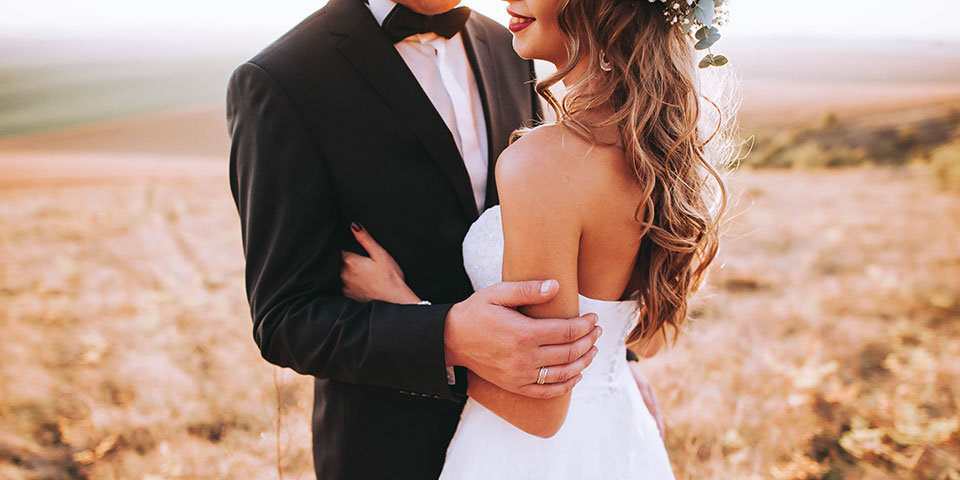Hosting a bilingual wedding is a beautiful opportunity to blend two different cultures together. But if your wedding guests don’t all share the same language, it can be tricky to ensure everyone feels included!
From your wedding invitations and wedding website to your ceremony vows and signage, there are a few elements you’ll need to consider when hosting a multicultural celebration. Keep reading as we share our top tips on how to plan a thoughtful (and practical) bilingual wedding below.
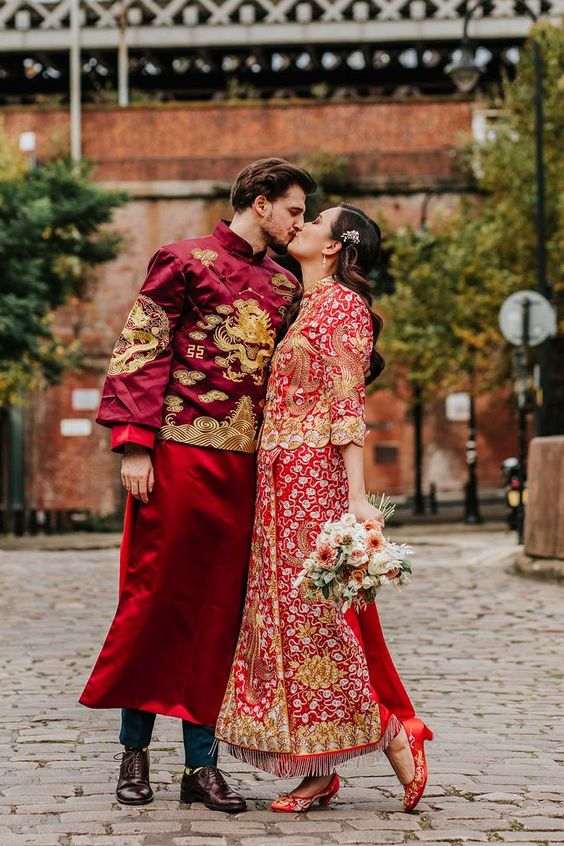
What is a Bilingual Wedding?
Simply put, a bilingual wedding is a marriage between two cultures – typically resulting in wedding guests who speak two different languages. Some of your wedding guests may also be bilingual, while others may only speak their native language.
When planning a bilingual wedding, it’s important to accommodate both languages at each touch-point. This will ensure all of your loved ones can enjoy your celebration, without feeling uncomfortable or isolated.
Not sure where to begin with planning a bilingual wedding? Here are some of our favorite ways to plan a thoughtful multicultural celebration.
Send Bilingual Wedding Invitations
Receiving your wedding invitations will be a great source of excitement for your guests – but when it comes to a bilingual wedding, what’s the best way to incorporate both languages?
If you’re using traditional paper invitations, you can simply create two separate versions and mail them out to your guests according to their native language. Sending digital invitations? Here at WedSites, you can easily translate your online invitations and choose the language you’d like each guest to receive them in.
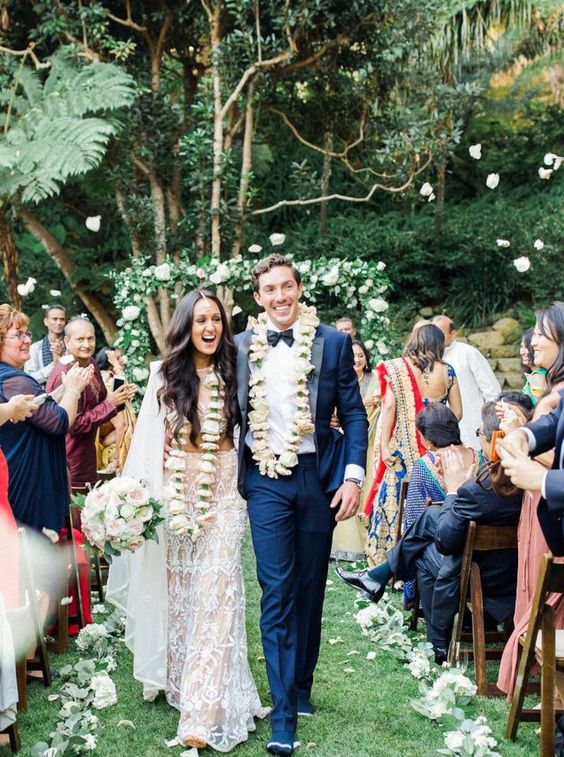
Create a Bilingual Wedding Website
Creating a wedding website is a fantastic way to share all of the essential wedding details with your guests, including your dress code, gift registry link, and venue directions. But, how exactly do you navigate this when you’re planning a bilingual wedding?
One option would be to include both languages on your wedding website with paragraph after paragraph of translated text. However, this can take up a lot of room and make your wedding website look quite clunky.
Another option would be to create your wedding website in one language and have your guests rely on a tool like Google Translate if needed. Unfortunately, these translations can often be awkward and incorrect (and may end up confusing your guests!).
In our opinion, the best method for sharing information with all of your loved ones in their native language is by using a bilingual wedding website builder. Here at WedSites, our wedding website builder allows you to translate your text into multiple languages – ensuring all of your guests feel welcome.
So, how is this done? Simply duplicate your existing wedding website and translate it into your required language (or languages). Then, assign a preferred language to each of your wedding guests, allowing them to experience your wedding website and RSVP form in their native language each time they visit.
Learn more about our multilingual wedding website features here!
Let Your Guests Know What to Expect
Your wedding website is also the perfect place to let your guests know what to expect on the day, and if there are any cultural traditions you’d like them to follow. For example: if you’d like them to wear traditional attire, or if there are any important customs they should be aware of.
Creating a detailed FAQs page on your wedding website is an ideal way to set these expectations upfront, ensuring both cultures feel respected (and helping you avoid any faux pas on the day!).
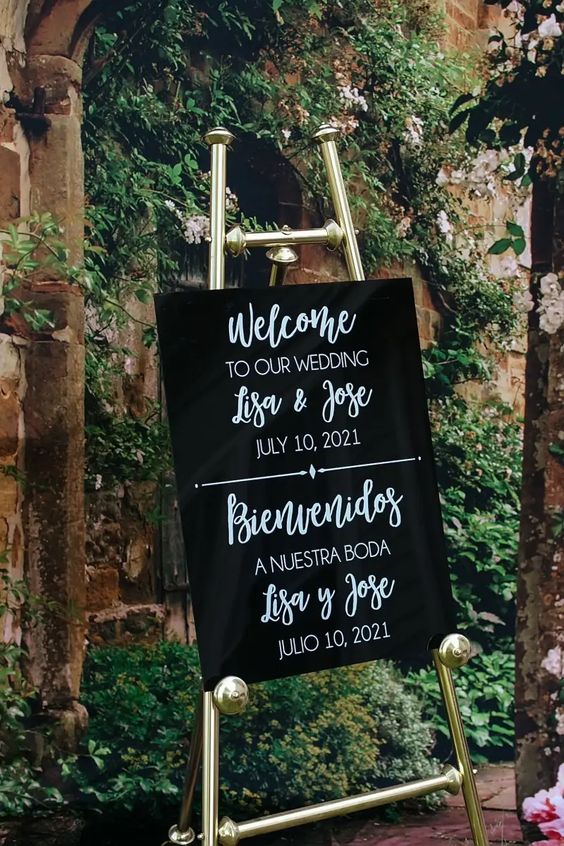
Accommodate Both Languages On Your Wedding Day
So, we’ve covered how to create bilingual wedding invitations and a bilingual wedding website – but how can you accommodate both languages on the wedding day itself?
When it comes to your wedding ceremony, there are a few ways you can create a thoughtful bilingual experience. For example:
- Create double-sided ceremony programs including both languages
- Hire a translator (or ask a friend or family member) to translate your ceremony proceedings
- Switch between both languages for different parts of the ceremony. For example, have the majority of your ceremony in one language, but ask a family member to share a special reading in their native tongue
- Learn and share your vows in the other person’s native language
- Hire a bilingual wedding celebrant who can incorporate both languages seamlessly
You’ll also want to consider including both languages on your wedding day signage – for example, your welcome sign, bathroom directions and menu. This will help all of your loved ones feel included, and ensure they can navigate their way around the venue with ease.
It can also be helpful to have a bilingual MC, or have 2 MC’s – one from each culture. This will ensure any important housekeeping details, venue instructions or speech introductions are understood by all of your guests.
Consult With Both Families Before The Day
When planning a bilingual wedding, it’s a good idea to have an open conversation with your parents to check in on their expectations for their day. Of course, this is your wedding (and should be planned your way!) but it’s also thoughtful to consider any special traditions or customs that may be important to both cultures. While there may need to be some compromise required, your loved ones will appreciate you taking the time to understand their wishes for the day.
Work with Bilingual Wedding Vendors
It’s not essential, but it can be very helpful to work with bilingual wedding vendors who speak both languages if possible! Working with a bilingual wedding planner and/or bilingual wedding photographer will make it easy to communicate with guests during family portraits, and be a point of contact for any questions or emergencies that may arise on the day.
Not sure how to find bilingual wedding vendors? Simply type (first language) + (second language) + (wedding vendor) + (location) into Google to help you find any specialists in your local area.
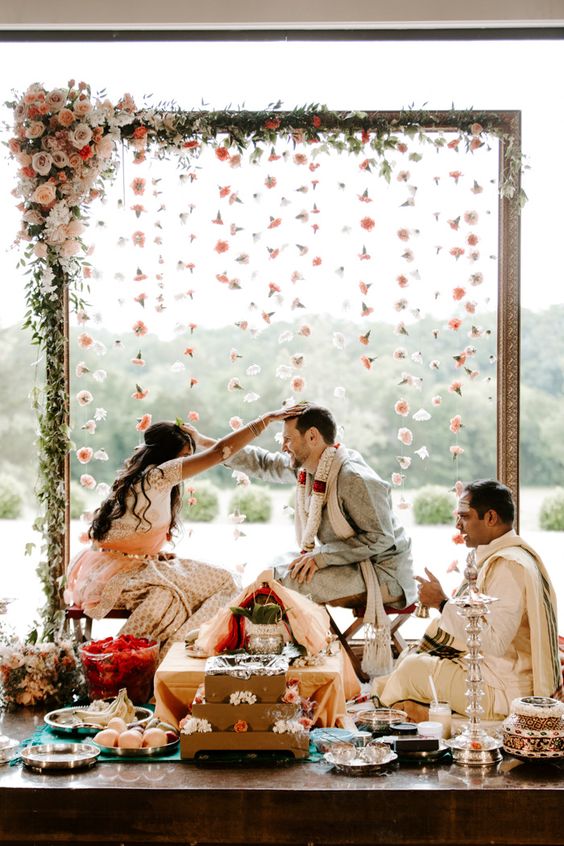
Be Thoughtful With Your Seating Chart
When creating your seating chart, be sure to consider the native languages of your guests, particularly if they don’t speak both languages. Of course, you want to encourage mixing and mingling between both cultures – but if you have any guests who only speak one language, we’d recommend seating them next to those who share their language so they don’t feel isolated. It’s also helpful to seat your bilingual wedding guests throughout the room to help them bridge the gap between both cultures.
Create a Cheat Sheet of Common Phrases
A sweet idea for a bilingual wedding reception is to provide a “cheat sheet” of common phrases from both languages to help your guests communicate. You can include one at each place setting, or one at each table.
Some phrases to include would be:
- My name is…
- Would you like a drink?
- Would you like to dance?
- Cheers!
Plan a Pre-Wedding Gathering To Break The Ice
If you’re planning a bilingual wedding, there’s a chance some family members may be meeting each other for the first time, especially if they live in different countries. Hosting a welcome gathering the night before your wedding can be a beautiful way to break the ice and introduce your loved ones.
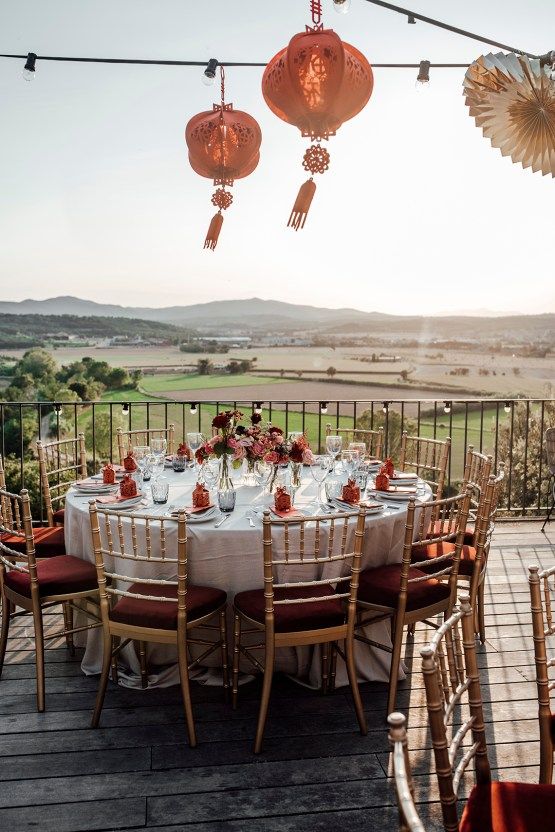
Infuse Both Cultures Into Your Day
Aside from including both languages throughout your wedding day, there are countless ways to infuse both cultures into your celebration. For example:
- Using traditional colors in your decor, flowers and theming
- Including traditional meals, desserts or drinks in your catering
- Getting creative with your guest favors
- Incorporating both cultures into your music selections
Tip: use your RSVP form to ask for a dance floor request from each guest, ensuring your playlist celebrates both cultures! Find the best RSVP questions to ask your guests here.
Create Your Bilingual Wedding Website with WedSites
Here at WedSites, we’ve made it easy to create a bilingual or multilingual wedding website. Use our wedding website builder to translate your website into different languages and assign a preferred language to each of your loved ones. You can also translate your digital invitations and RSVP form, ensuring all of your guests have a thoughtful and cohesive experience.
Ready to get started? Explore our beautiful range of wedding website templates, or sign up for your free account right here!

